Sorted by date Results 1 - 17 of 17

When full-scale war erupted in Europe in September 1939 as Hitler's troops marched into Poland, merchant seamen docked in U.S. ports found themselves stranded. Great Britain refused to grant safe passage home to the crews of German and Italian ships because it did not want the ships or their crews to be used in the war against them. When the crews began to sabotage their own ships to keep them out of British hands, the men were taken off and sent first to Ellis Island and...

Red desert, ice caves and wild horses are symbols of a most unique piece of Montana's mountain country – the island-like Pryor Mountains of south-central Montana. From the Yellowstone River Valley and the big-little town of Billings, these Pryors appear as hills when compared to the towering Beartooths 30 miles to the west. Looks are deceiving, though. Flying just beyond their flanks, especially along the east face, reveals a steep, rugged and high landscape. Named after N...

This piece was penned several years ago for Big Sky's Lone Peak Lookout newspaper owing to the increase in bear and people encounters in the Madison and Gallatin ranges. What the article discusses is pertinent to any wild country in the state, so we bring it back as a reminder. Be it biking, horseback riding or hiking, as more and more folks head out to enjoy the trails of the wilderness and national park lands near Big Sky, bear and human meetings are bound to increase. The...
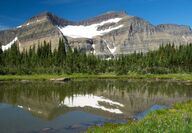
It took more than 60 years to create Glacier National Park, which is the foundation of the much larger natural system called the Crown of the Continent that we study and celebrate today. The events that led to the formation of the park and the surrounding ecosystem are regarded today as the bedrock of the conservation movement in America. What follows then is a timeline as we see it: 1849 – George Bird Grinnell born in Brooklyn, N.Y. – Sept. 20, 1849 George Bird Grinnell was...
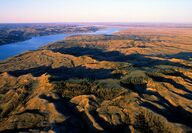
On about Dec. 21, the occasion of the winter solstice, the sun takes a brief respite on the tropic of Capricorn at 23 1/2 degrees south latitude. Then it begins its six-month odyssey north for a rendezvous with the tropic of Cancer at 23 1/2 degrees north latitude. Along the way, at a precise second in March, its rays are directly overhead on the equator, declaring the Spring Equinox. This year that instant occurs at 10:57 a.m. Montana time on Thursday, March 20. In Montana,...
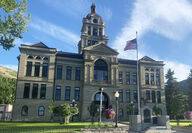
"In 1880, Nate Leavengood's meadow, where Anaconda now stands, was a lush and quiet place. As far as the eye could see in all directions there was nothing but the valley, the swelling foothills and mountain ramparts...four years later, the meadow was gone...there had been no gradual encroachment of civilization, no creeping in of small farms and little stores. There was no village. First there was nothing, and then all of a sudden there was the world's largest smelter and...
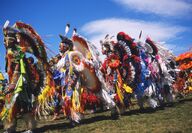
At one time, they were feared Plains warriors. Historians believe the Blackfeet, forced out of their ancestral grounds in today's upper Great Lakes region by white advancement, were one of the first Native American tribes to head West. Though there are several stories on how they received their name, the most plausible is that their moccasins were blackened from the long journey across the prairie to reach what would become Montana. The Blackfeet band now living on the Blackfe...
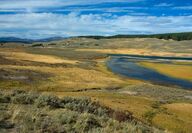
Call it 670 miles or perhaps more precisely 674 miles, but either way, the Yellowstone River remains the nation's longest undammed waterway. It's a great river that gathers some of the finest mountain and prairie topography on the planet as it passes peaks reaching 12,000 feet in elevation, the largest high-mountain lake on the continent, dense evergreen forests, buttes, colorful badlands, deep canyons and sweet-smelling sage and juniper covered hills. A good portion of this...
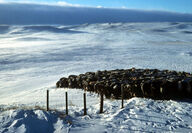
Snow had been falling almost continuously for a week, and it was very cold. The temperature had only risen to minus 18 degrees. Finally, late in the day, the snow and wind stopped, skies cleared rapidly, and as the sun set the temperature plummeted. Early the next morning, on Jan. 20, 1954, the Montana and continental 48 states' record cold temperature of minus 70 degrees was observed at a mining camp near the Continental Divide a short distance from Rogers Pass near Helena....
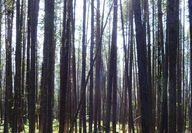
Life gets busy for everyone. We all dream about getting away from it all for an hour, a day or perhaps even a week. My favorite is to go for a hike through one of Montana's lodgepole pine-covered mountainsides and stretch out under the trees on a bed of pinegrass and dwarf huckleberry, also known as grouse whortleberry, and listening to the wind gently whisper its secrets through the tree crowns and needles. The lodgepole pine forests that cover several million acres of Montan...
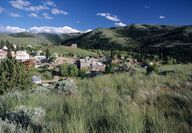
Arriving in Washington, D.C., Judge Sidney Edgerton consulted with President Lincoln and found him agreeable to the idea of a new territory in the Rockies. More important, Edgerton discovered that his friend and fellow Ohioan, Congressman James M. Ashley, had already begun work on a bill to form the new territory. Ashley, who chaired the House Committee on Territories, had the power to make his wishes felt. His political muscle and reports of the area's wealth of gold, which...
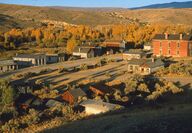
Each of the United States of America – except the original 13, Texas and California – was first organized as a territory before achieving admittance to the Union as a state. Originating with the Ordinances of 1785 and 1787, the territorial system provided the expanding U.S. with a method to govern frontier areas until they gained sufficient population and economic maturity to qualify for equality with the states. Territories represented a sort of compromise between col...
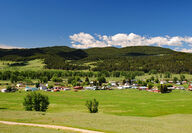
Fifteen miles up the Little Blackfoot River from Garrison Jct. and straddling US Hwy 12 sits Avon. A picturesque place, the Little Blackfoot River skirts the south perimeter of town, Nevada Creek Valley runs its course on the north, the Garnet Range begins its rise on the northeast and the Crown of the Continent's southwest corner is just a few miles to the northeast. About 115 folks in town and 200 in the surrounding area call Avon home. "Gold, Gold, Gold!" are the words...
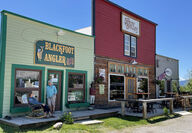
Long on scenery and short on population the middle Blackfoot River Valley is the epitome of rural Montana. Mountains of the fabled Bob Marshall Country form its northern horizon and forested uplifts of the Garnet Range guard the southern perimeter. And a river runs through it. Since Montana earliest years when homesteaders made their way here, the valley has remained a ranching domain. And like many old Montana towns, Ovando, its human enclave has weathered countless storms...
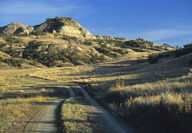
From the center of the state at Lewistown, it is 262 miles to Sidney and just a few miles further to the Dakota line. At night you can drive 50 miles or more and never see another vehicle. Fly over it at after dark and you rarely notice a light. This far-flung portion of Hwy 200 traverses Montana's loneliest stretch of geography. But that is this huge swath of landscapes greatest asset. For what it lacks in civilization, it makes up for in the grandeur of the prairie and the...
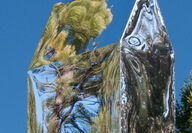
So, an Irishman and a logger walk into a Seattle bar. Imbibing spirits, they bond over their interest in knives, solve the world's problems, and by the end of the night the two new BFFs think that with no source of funding, building a massive 26-acre outdoor art gallery in the middle of woods in Montana and getting renowned international artists to participate is a swell idea. And, just like that... Blackfoot Pathways: Sculpture in the Wild was born. Well, that's my short...
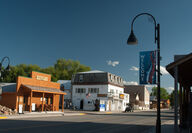
Do you sometimes think the state is being inundated with new ways, and we are losing the real Montana? In some places perhaps yes, but most of the state is still the Montana we have always known and perceived. It is only in a small percentage of the state's mass where this change has actually taken place. The last census showed Montana, the fourth-largest state in the nation in terms of landmass, as having 989,415 folks residing within its borders. We use the 2010 census, as...